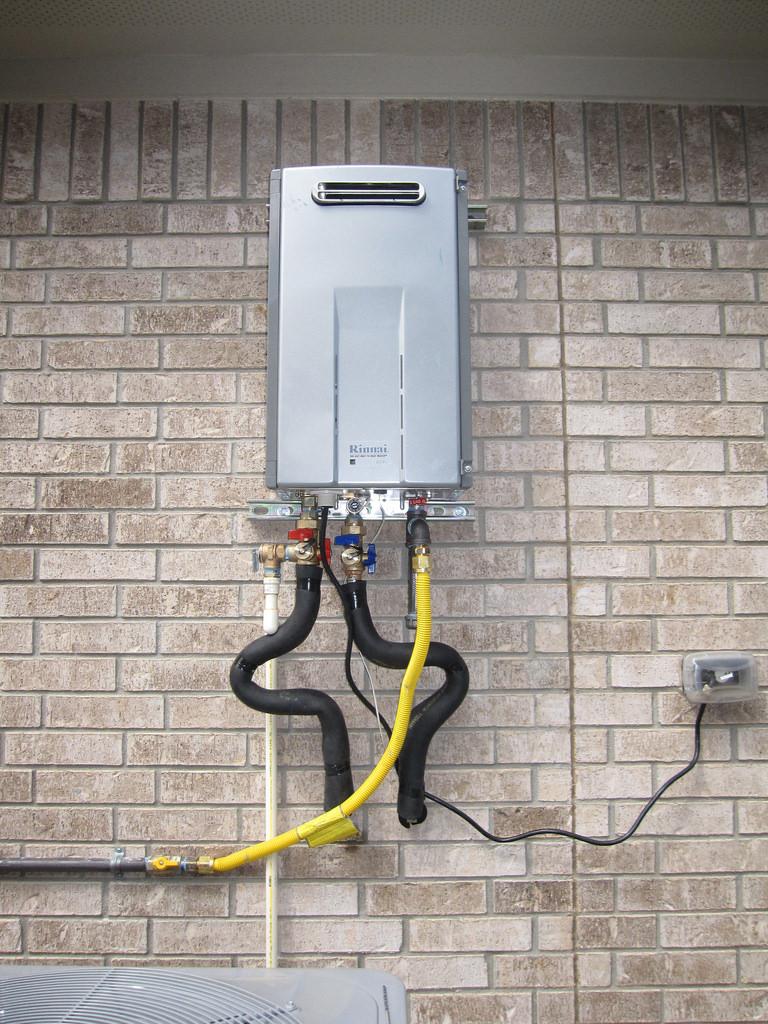Tankless Water Heater Maintenance For Dallas Homeowners
The tankless water heater, also referred to as an on-demand water heater, offers homeowners the convenience of having hot water available whenever it is needed, without requiring a very heavy tank to hold water in storage and keep it hot. The compact size of these water heaters, along with their efficiency, are two primary reasons behind their popularity.
Tankless water heaters are great at saving energy. But, to maintain that energy efficiency, it is important to flush mineral deposits from the unit about once a year.
Tankless Water Heater Maintenance
Tankless, or on-demand water heaters, can deliver terrific benefits to the homeowner and small business. Their compact size, increased efficiency, and flexibility are just a few reasons they are popular. However, as with any heat exchange method dealing with water, there are certain maintenance requirements to keep tankless water heaters performing at top levels. Millions of these units are in use today and as HVAC or plumbing contractors they offer a terrific opportunity for maintenance and repair services.
One of the ongoing maintenance requirements is to make sure that heat exchange elements are free from lime scale or scale as it is commonly known. This buildup is well known throughout our industry. What may look like a light coating of scale buildup can have serious impacts on the efficiency of the system, causing water heaters, boilers and more to run longer burner cycles. This leads to strain on the system and shorter lifespan. Not to mention the irate customers.
Step-by-step Maintenance
-
If available, carefully review manufacturer’s cleaning instructions.
-
Turn off the power source.
-
Remove the lid from the water heater (usually just with a couple of screws).
-
Close off three water valves supplying the water heater.
-
Slowly remove the purge port valve caps from the purge valves located on each of the cold and hot water valves. (Relieves any pressure that has built inside the valves and will prevent excess hot water from shooting out and coming into contact with your skin.)
-
Attach
hosing
lines to each of the 3 valves. These are usually supplied by the manufacturer.
-
Open the purge port valves, twisting them perpendicularly to the position of the cold and hot valves.
-
Use 2.5 gallons (9.46 liters) of undiluted white vinegar to clean the tankless water heater.
-
Flush and drain, following the directions provided by the manufacturer.
-
Close the purge port valves by twisting the “T”-shaped handles after the flushing process is complete.
-
Disconnect the
hosing
lines from each water valve.
-
Replace the purge port valve caps onto the purge valves. Make sure everything is properly tightened.
-
Find the filter (should be labeled), remove it by unscrewing it, and clean out the housing and inside screen of the filter by just running it under tap water in the sink. When done, replace the filter.
-
Refer to manufacturer’s manual for exact instructions on safely restarting the water heater, including replacing the cover and affixing it with the screws you removed earlier.
-
Slowly turn on the hot water tap in your sink so air passes through the pipe.
Importance of Tankless Water Heater
Sediment buildup is very common in water heaters, and can be a major contributor to making your system less efficient. If you’ve ever heard banging or knocking noises coming from your water heater, this is likely a sign that you need to have your water heater flushed. The sediment is caused from loose minerals in the water, which then settles on the bottom making it more difficult to produce hot water. Call (214) 238-8353 us for your home service and repair needs.
For more related articles and info visit https://www.berkeys.com/category/plumbing-articles/
